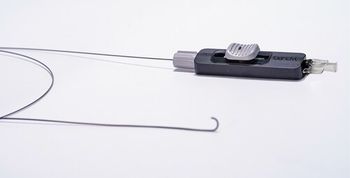
The paradox in American healthcare
Our medical care system works poorly for most chronic medical illnesses and it costs far too much.
Editor's Note:
We have a real paradox in
On the one hand, we have exceptionally well-educated and well-trained providers
RELATED:
But, on the other hand, we have a very dysfunctional health care delivery system. A fascinating paradox. One wonders just why it is that Americans tolerate this paradox of incredible medical advances and outstanding providers yet a dysfunctional delivery system.
Our medical care system works poorly for most chronic medical illnesses and it costs far too much. Chronic illnesses are ones like diabetes with complications, cancer, heart failure and neurologic illnesses like stroke and multiple sclerosis.
These chronic illnesses are increasing in frequency at a very rapid rate. They are largely (although certainly not totally) preventable. Overeating a non-nutritious diet, lack of exercise, chronic stress, and 20% still smoking are the major predisposing causes of these chronic illnesses. Obesity is now a true epidemic with one-third of us overweight and one-third of us frankly obese. The result is high blood pressure, high cholesterol and elevated blood glucose, which combined with the long-term effects of behaviors, lead to diabetes, heart disease, stroke, chronic lung and kidney disease and cancer.
And once any of these chronic diseases develops, it usually persists for life (of course some cancers are curable but not so most others). These are complex and expensive diseases to treat-an expense that continues for the rest of the person’s life.
TRENDING:
Primary care physicians (PCP) can deal with most of the issues of these patients-if they have the time to do so. But they do not have the time. They need to see 20-30 patients per day to meet overheads and earn their salary, so appointments are usually 15 minutes and “face time” is about 8-10 minutes.
That’s enough time for “simple” problems but not for the patients with a chronic illness or two or three who is also taking multiple prescription medications. That patient needs much more time. The PCP needs time to listen carefully, then time to think and to then provide the appropriate care. But without enough time, the tendency is to just refer out to a specialist. This drives up the cost and does not improve quality. Of course there are times when referrals to specialists are necessary. Primary care physicians then need to coordinate that care, but generally do not have the time. Any team needs a quarterback, and in general, that person should be the primary care physician. He or she needs to be the orchestrator as much if not more than the intervener. Coordination is absolutely essential to assure good quality at a reasonable cost.
This need for a team and a team quarterback for the patient with a chronic illness is much different than the needs of the patient with an acute illness where one physician can usually suffice. It is this shift to a population that has an increasing frequency of chronic illnesses that mandates a shift in how medical care is delivered. Unfortunately, our delivery system has not kept up with the need. The cause is a reimbursement system that leads to too many visits per day and not enough time to listen and think. It is unfortunate because this is the root cause of why medical care has become so expensive and why we have lost the old fashioned “relationship-based medicine” that each of us desires.
Since most chronic illnesses are preventable, what are needed are aggressive preventive approaches along with attention to maintaining and augmenting wellness. This would reduce the burden of disease over time and greatly reduce the rising cost of care. Unfortunately, America places far too little attention and far too few resources into wellness and preventive care. Most primary care physicians do not give really high-level preventive care, because they just do not have enough time.
IN CASE YOU MISSED IT:
Yes, they do screening for high blood pressure and cholesterol and for various cancers and they attend to immunizations. But this is not enough. Patients need counseling on, at least, tobacco cessation, stress management, good eating habits and a push toward more exercise. They need an admonition to not drink and drive, not text and drive and to buckle up. They need to be reminded that dental hygiene today pays big dividends in the later years of life. And they need someone to really listen closely to uncover the root cause of many symptom complexes that are imbedded in stress and anxiety.
When a patient is sent for extra tests, imaging or specialists’ visits, the expenditures go up exponentially, yet the quality does not rise commensurately. Indeed it often falls. But primary care physicians are in a non-sustainable business model with today’s reimbursement systems, so they find they just do not have enough time for care coordination or for more than the basics of preventive care. And they just do not have time to listen and think.
So the paradox is that America has the providers, the science, the drugs, the diagnostics and devices that are needed for outstanding patient care. But the delivery is not what it should or could be. The result is a sicker population, episodic care and expenses that are far greater than necessary. The fix is change the reimbursement system to get PCPs the time needed to listen, to prevent, to coordinate and to just think. This will lead to much better care and less expensive care.
Stephen C. Schimpff, MD, is a quasi-retired internist, professor of medicine and public policy, former CEO of the University of Maryland Medical Center, senior advisor to Sage Growth Partners and Sanovas Inc, and is the author of
Newsletter
Stay informed and empowered with Medical Economics enewsletter, delivering expert insights, financial strategies, practice management tips and technology trends — tailored for today’s physicians.















